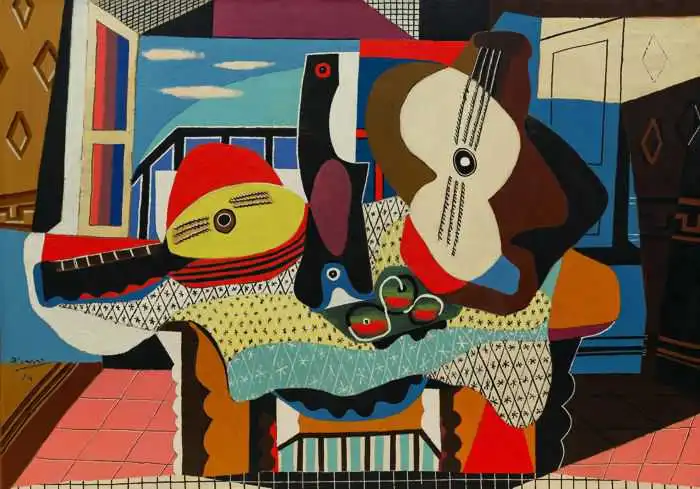Music has always been an integral part of human culture, spanning across different eras and civilizations. It has come a long way from the classical music era to contemporary times. As we listen to modern-day pop songs and electronic beats, it’s easy to forget the rich history that shaped our musical landscape today. Join us on a journey through time as we explore the evolution of music, from its humble beginnings in ancient civilizations to its explosive growth in the digital age. Get ready for an exhilarating ride!
Introduction to the History of Music
Humans have been making music for thousands of years. The history of music is as long and complex as the history of human civilization itself. Music has been used to express all kinds of emotions, from the deepest sorrow to the most joyous celebration.
Music has always been an important part of human culture. It helps us to express our feelings, to communicate with each other, and to connect with our past. Music also plays a vital role in religious ceremonies and in social events.
The history of music is divided into several different periods:
The Ancient Period: This includes the music of Greece, Rome, and other ancient cultures. The Medieval Period: This is the time when most of Europe was under the rule of the Catholic Church. The Renaissance Period: This period saw a rebirth of interest in art and culture. The Baroque Period: This period saw the rise of opera and other forms of classical music. The Classical Period: This period saw the development of symphonies and other orchestral works. The Romantic Period: This period saw an increase in emotionality in music. The Modern Period: This is the period from 1900 onwards, which includes jazz, rock, pop, and contemporary classical music.
Classical Music Evolution
During the Classical period, music became more complex and detailed. Composers began to write longer pieces, and the use of dynamics and tempo became more common. The orchestra also began to take on a more important role in classical music. This period saw the rise of some of the most famous classical composers, such as Wolfgang Amadeus Mozart and Ludwig van Beethoven.
The Romantic period was a time of great change for music. Composers began to experiment with new sounds and forms, and the piano became a more prominent instrument. Music became increasingly emotive, and themes of love, nature, and nationalism were common. Some of the most famous Romantic composers include Frederic Chopin and Pyotr Ilyich Tchaikovsky.
The 20th century was a time of great change for music. Composers began to experiment with new sounds, rhythms, and harmonies. The use of technology also increased during this time, which allowed for even greater experimentation in sound. This period saw the rise of many different musical styles, including jazz, blues, rock, and pop.
Jazz and Blues Development
Jazz and blues are genres of music that developed from African American culture. Jazz is a style of music that originated in the early 20th century, while blues is a style of music that originated in the late 19th century. Both genres have been influential in the development of contemporary music.
Jazz is a style of music that is characterized by improvisation, syncopated rhythms, and a horn-based ensemble. The earliest jazz bands were led by New Orleans musicians such as Louis Armstrong and Jelly Roll Morton. Jazz quickly spread to other cities in the United States, such as Chicago and New York City. In the mid-20th century, jazz began to be influenced by European classical music, which led to the development of different styles of jazz such as bebop and cool jazz.
Blues is a style of music that is characterized by its use of blue notes, 12-bar chord progressions, and call-and-response patterns. The earliest blues musicians were mostly African Americans who were living in the southern United States. The popularity of blues music grew in the early 20th century, due in part to the rise of record companies that marketed blues recordings to a wider audience. In the 1950s and 1960s, blues artists such as Muddy Waters and Howlin’ Wolf helped to popularize electric blues guitar playing.
Rock and Pop’s Influences
Hip Hop’s Emergence
Hip hop first emerged in the 1970s in New York City, when DJs began to experiment with looping and manipulating sounds on record players. This new style of music soon caught on with young people in the city, who began to rap over the beats. Hip hop quickly spread to other parts of the United States and eventually around the world.
Today, hip hop is one of the most popular genres of music, with artists like Kendrick Lamar and Drake topping the charts. The genre has also had a profound impact on fashion, language, and culture.
Contemporary Music Today
Contemporary music today encompasses a wide range of styles and genres. From the traditional sounds of classical music to the more modern, experimental sounds of contemporary music, there is something for everyone to enjoy.
Classical music has been around for centuries, and its popularity has only grown in recent years. Thanks to the internet and streaming services like Spotify, people all over the world can easily access this type of music. Contemporary classical composers are creating new works that combine elements of both traditional and contemporary styles, making this genre more accessible than ever before.
In contrast, contemporary music is often seen as being more experimental and avant-garde. This type of music often pushes the boundaries of what is considered “normal” or “acceptable”, and as a result, can be quite polarizing. However, there is no denying that contemporary music is exciting and full of possibilities.

